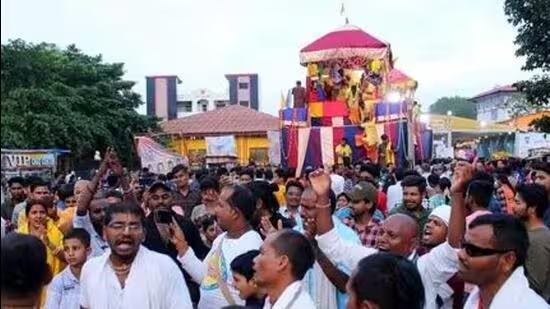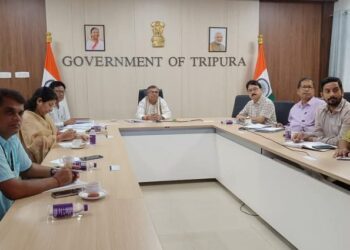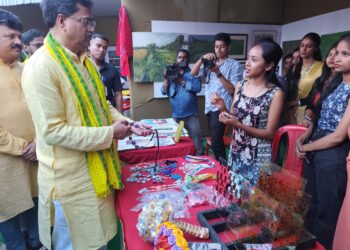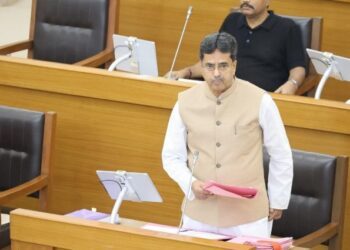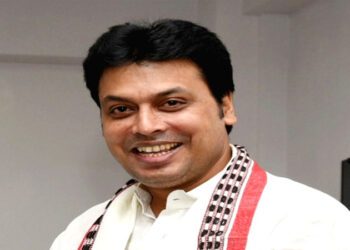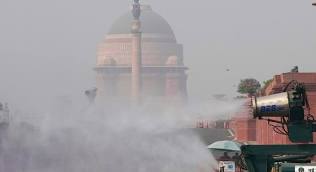Significance and Origin of the Ratha Yatra in 2024
The Ratha Yatra, also known as the Chariot Festival, is one of the most celebrated and significant festivals in Hindu culture. Its origins can be traced back to the ancient temple town of Puri in Odisha, where it has been observed for centuries. The festival honours Lord Jagannath, a form of Lord Vishnu, along with his siblings Balabhadra and Subhadra. The grand procession, where the deities are placed on elaborately decorated chariots and pulled by thousands of devotees, symbolises the journey of these deities from their temple to their aunt’s house. In 2024, this festival will continue to hold immense spiritual and cultural importance, drawing millions of devotees and tourists from across the globe.
Spiritual and Cultural Significance
The significance of the Ratha Yatra lies in its profound symbolism and the religious fervour it inspires. For devotees, pulling the chariot is considered a sacred act, believed to bring them closer to the divine. The festival represents the idea of divine presence in the mundane world, as the deities leave their sanctum to interact with devotees. This aspect of the festival underscores the inclusivity of Hindu worship, where the gods come out to meet their followers, regardless of caste, creed, or status.
Contemporary Cultural Impact
In the contemporary context, the Ratha Yatra in 2024 is not just a religious event but a cultural spectacle that showcases the rich traditions and vibrant culture of India. The festival is marked by music, dance, and a variety of rituals that highlight the diverse cultural heritage of the region. The chariots themselves are a marvel of traditional craftsmanship, constructed anew each year from wood and adorned with intricate carvings and colourful decorations. The construction and decoration of the chariots involve a large number of artisans, reflecting the communal effort and the continuity of ancient skills and traditions.
Global Reach and Economic Impact
The 2024 Ratha Yatra carries additional significance due to the increasing global interest in Indian culture and spirituality. With improved connectivity and the proliferation of media, the festival’s reach has expanded far beyond the borders of India. International devotees and tourists flock to Puri to witness the grand event, contributing to cultural exchange and promoting global understanding of Hindu traditions. The festival also plays a crucial role in the local economy, providing a boost to tourism and related industries.
Rituals and Preparations
In Puri, the festival begins with a series of elaborate rituals. The deities are ceremoniously bathed in a ritual called ‘Snana Purnima,’ after which they fall ill and are kept in seclusion for fifteen days. This period is known as ‘Anavasara,’ during which the deities are not available for public viewing. The culmination of this period leads to the main event of the Ratha Yatra, where the deities are brought out in a grand procession to their chariots. The journey from the Jagannath Temple to the Gundicha Temple, covering a distance of about three kilometres, is the highlight of the festival.
Symbolism and Devotional Participation
The deities’ journey is not just a physical procession but a deeply symbolic act. It represents the movement of life, the cyclical nature of time, and the journey of the soul towards salvation. The participation of devotees in pulling the chariots signifies their collective journey towards spiritual enlightenment. The festival thus serves as a powerful reminder of the core principles of Hindu philosophy, including devotion, karma (action), and dharma (righteousness).
Administrative Improvements
In recent years, the administration of the festival has seen significant improvements to accommodate the growing number of participants and ensure their safety. The 2024 Ratha Yatra is expected to be one of the largest gatherings, necessitating meticulous planning and coordination. Measures such as crowd management, health services, and security arrangements are implemented to ensure a smooth and safe celebration. The involvement of various stakeholders, including local authorities, religious leaders, and community organisations, reflects the collaborative spirit that is central to the festival.
Celebrations Beyond Puri
In addition to Puri, the Ratha Yatra is celebrated in various parts of India and around the world. Cities like Ahmedabad, Kolkata, and even places in the United States, the United Kingdom, and other countries with significant Indian communities host their own versions of the festival. These celebrations, while maintaining the core rituals, often incorporate local cultural elements, thereby enriching the festival’s global appeal. The spread of the Ratha Yatra beyond Puri underscores the universal message of devotion and the shared cultural heritage that binds Hindu communities worldwide.
Environmental Consciousness
The 2024 Ratha Yatra also emphasises environmental consciousness, reflecting the growing awareness of sustainability. Efforts are made to ensure that the materials used for the chariots and other festival paraphernalia are eco-friendly. The management of waste and the preservation of the sanctity of the pilgrimage route are given special attention. This alignment with environmental values enhances the festival’s relevance in contemporary times, where the intersection of tradition and modernity is increasingly significant.
Jagannath Ratha Yatra in Agartala
The significance of the Ratha Yatra is equally profound in Agartala, the capital city of Tripura, where the festival is celebrated with great enthusiasm, particularly at the Jagannath Bari temple and ISKCON centers. The Jagannath Bari temple, a prominent religious site in Agartala, serves as the epicentre for the local celebrations. The temple, dedicated to Lord Jagannath, Balabhadra, and Subhadra, becomes a hub of activity as devotees gather to witness and participate in the chariot-pulling ritual.
CM Manik Saha Inaugurates Jagannath Rath Yatra Mela in Tripura
On June 28, Chief Minister Manik Saha inaugurated the Jagannath Rath Yatra Mela at Tripura’s Melagarh in Sepahijala district, marking the beginning of the 9-day-long cultural festival. This inauguration comes in the wake of the tragic incident during last year’s Ulta Rath Yatra in Kumarghat, where ten devotees lost their lives due to electrocution. In response, the West Tripura district administration has proactively implemented safety measures to prevent any further mishaps. West Tripura District Magistrate Dr. Vishal Kumar announced that this year, the chariot organisers must ensure that the height of Lord Jagannath’s chariots remains below five feet and minimise the use of metal in chariot construction. The Public Works Department (PWD) and Tripura Electricity Corporation Ltd. (TECL) will inspect the proposed chariots and check transmission lines along the designated routes. Additionally, ambulances and an increased police presence will be deployed during the event.
Role of ISKCON in Agartala’s Ratha Yatra
ISKCON (International Society for Krishna Consciousness) plays a vital role in Agartala’s Ratha Yatra celebrations. The organisation, known for its extensive network of temples and cultural centres worldwide, brings a unique touch to the festivities with its vibrant processions, devotional singing, and dancing. ISKCON’s involvement not only enhances the spiritual atmosphere but also attracts a larger audience, including international devotees and tourists. Their meticulous organisation and community outreach programmes ensure that the essence of the Ratha Yatra is preserved while also incorporating modern elements of event management and public safety.
Community Participation and Cultural Programmes
The Ratha Yatra in Agartala is characterised by widespread community participation. Schools, colleges, and various local organisations come together to contribute to the festivities. Cultural programmes, including traditional music and dance performances, are organised to celebrate the occasion. These programmes not only entertain but also educate the younger generation about the rich cultural heritage associated with the Ratha Yatra. The festival thus serves as a platform for fostering community spirit and cultural continuity.
Safety Measures and Administrative Efforts
In light of last year’s tragic incident in Kumarghat, significant safety measures have been put in place for the 2024 Ratha Yatra. The administration has emphasised the importance of safety, mandating lower heights for the chariots and minimising metal use. Inspection teams from the PWD and TECL will ensure that all safety protocols are followed, particularly concerning transmission lines. The deployment of ambulances and increased police presence will further ensure the safety of the participants. These measures reflect the administration’s commitment to preventing accidents and ensuring a safe and joyous celebration for all.
Consumer Forum’s Role and Call for Improvement
The consumer forum has expressed grief over the inadequate services and has called for improvements to match the standards of other countries. While call centres have been set up for registering complaints, the service level remains below par compared to global standards. The forum’s call for better services and timely responses is a crucial step towards improving the overall experience for devotees and participants. Ensuring prompt and efficient services during such large-scale events is essential to maintaining public trust and ensuring a smooth celebration.
Suggestions for Improvement
To further enhance the Ratha Yatra celebrations, several suggestions can be implemented. Firstly, increasing community involvement in the planning and execution of the festival can help distribute responsibilities and ensure a more organised event. Secondly, incorporating technology for real-time monitoring and crowd management can significantly enhance safety measures. Thirdly, regular training and awareness programmes for volunteers and organisers can ensure that everyone is well-prepared to handle any emergencies. Finally, continuous feedback from participants can help identify areas for improvement and ensure that the festival evolves to meet contemporary needs while preserving its traditional essence.
Conclusion
In conclusion, the Ratha Yatra of 2024 is a multifaceted celebration that transcends mere ritualistic observance. It is a confluence of spirituality, culture, community, and modern values. The festival’s origins in the ancient town of Puri have blossomed into a global phenomenon, drawing millions of participants and admirers. The essence of Ratha Yatra lies in its ability to unite people in devotion, foster cultural continuity, and adapt to contemporary challenges without losing its spirituality.


